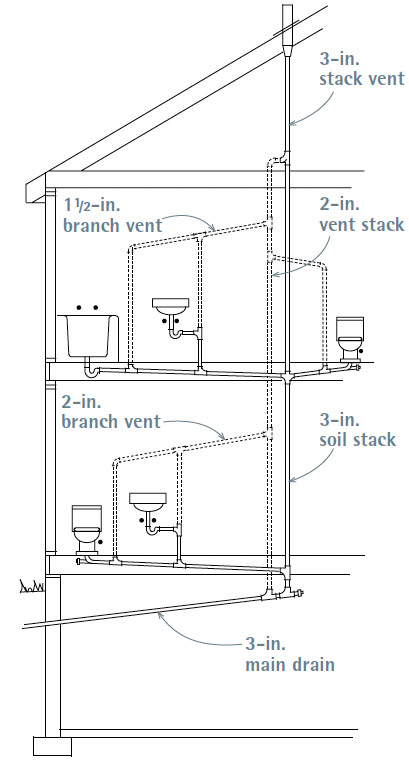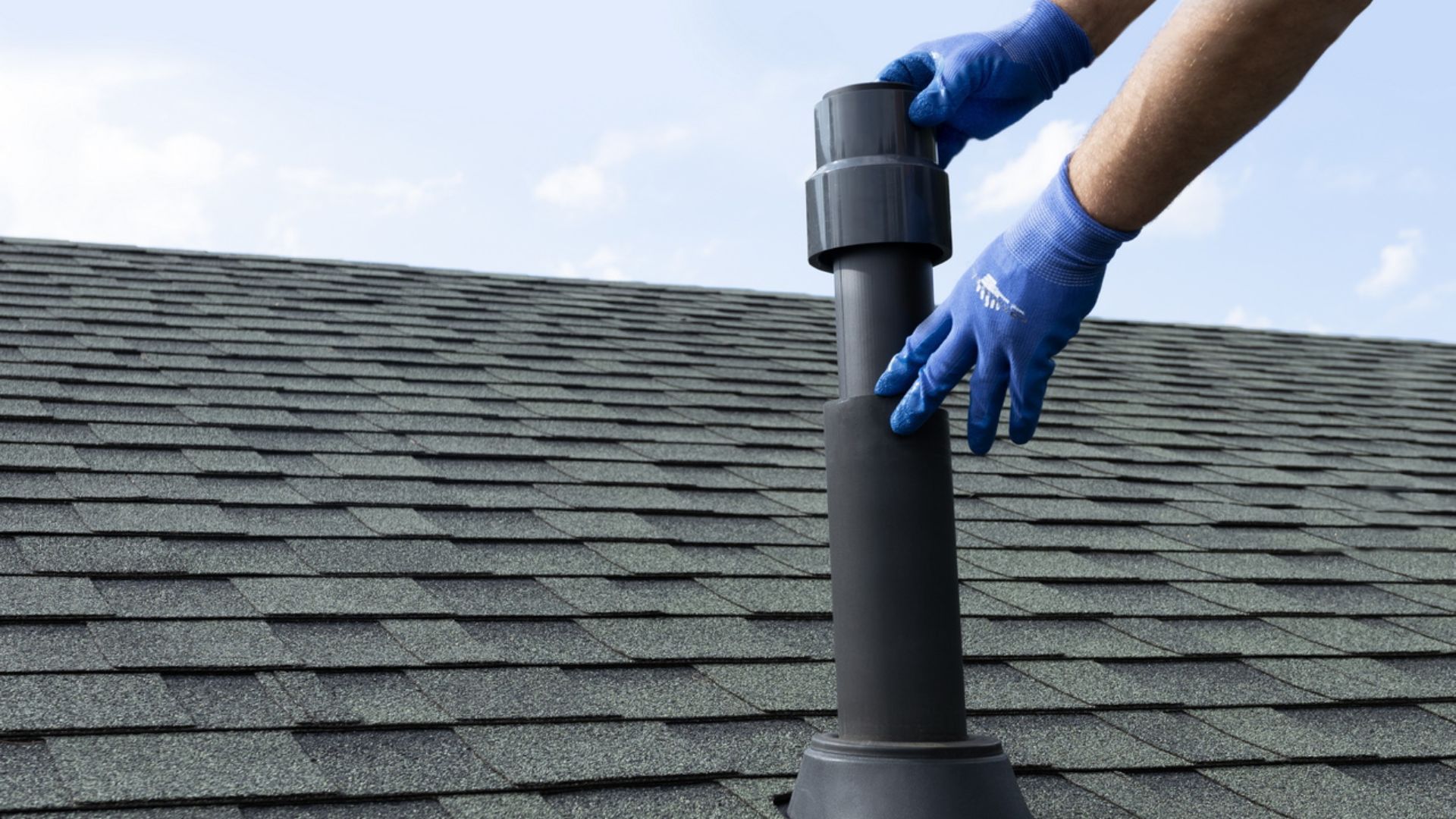The Value of Proper Ventilation in Your Home's Plumbing Systems
The Value of Proper Ventilation in Your Home's Plumbing Systems
Blog Article
Presented here below you will discover a bunch of extremely good details in regards to What Are Plumbing Vents and Why Are They Important?.

Appropriate air flow in pipes systems is typically neglected, yet it is important for preserving the functionality and safety and security of your home's pipes. Ventilation assists manage atmospheric pressure, stop the accumulation of unsafe gases, and guarantee the reliable elimination of waste. In this guide, we will certainly discover the value of correct pipes ventilation, exactly how it functions, and the advantages it brings to your plumbing system.
Just How Air Flow Works in Pipes Equipments
Air Pressure Policy
Appropriate ventilation preserves balanced atmospheric pressure within the pipes system. When water moves via pipelines, it displaces air. Without adequate air flow, this displacement can develop negative pressure, leading to reduce drains pipes or siphoning of water from traps, which can create undesirable odors to leak right into the home.
Avoiding Sewage System Gas Accumulation
Among one of the most critical functions of pipes vents is to avoid drain gases, such as methane and hydrogen sulfide, from building up within the home. These gases can pose serious health and wellness risks and are highly flammable. Vent pipelines permit these gases to leave securely outdoors.
Aiding in Waste Removal
Air flow assists in the effective elimination of wastewater by preventing airlocks in the drainage system. When air can stream freely with the vents, it permits water and waste to move efficiently through the pipelines, minimizing the risk of obstructions and backups.
Benefits of Proper Air Flow
Enhanced System Effectiveness
Properly ventilated pipes systems run much more successfully, with fewer blockages, faster draining pipes, and less strain on the pipelines. This effectiveness prolongs the lifespan of the pipes system.
Improved Air Top Quality
By stopping sewage system gases from entering your home, appropriate ventilation adds to better indoor air high quality, making your living environment healthier and more comfortable.
Preventing Water Damages
Appropriate ventilation helps stop water from being siphoned out of catches, which can result in drain gases going into the home and triggering water damages over time.
Actions to Ensure Appropriate Ventilation
Consulting Plumbing Codes
Constantly speak with local plumbing codes when developing or changing your plumbing system. These codes offer the needed standards for correct airing vent and guarantee your system meets safety criteria.
Normal Evaluation and Maintenance
Routine evaluations can aid identify possible ventilation problems before they come to be major problems. Upkeep tasks, such as cleansing vent pipes and looking for obstructions, are essential for keeping the system in good working order.
Specialist Installation
For new setups or major modifications, it's wise to hire a specialist plumbing professional. They have the expertise to make sure the ventilation system is correctly developed and mounted according to code.
Recognizing Air Flow in Plumbing
Ventilation in pipes refers to the network of pipes that permit air to stream via the drainage system. These vents serve several objectives, consisting of controling air pressure within the pipes, protecting against sewer gases from getting in the home, and helping in the smooth circulation of wastewater.
Types of Plumbing Vents
Main Heap Vent
The main pile air vent, also called the vent stack, is the key air vent in a plumbing system. It expands from the major drain line up through the roofing system, allowing gases to get away and fresh air to get in the system.
Branch Vent
Branch vents connect to the main stack vent and serve individual components, such as sinks, toilets, and showers. These vents make certain that each component has adequate ventilation to work correctly.
Air Admission Shutoff (AAV).
An Air Admission Valve (AAV) is a one-way valve that permits air to go into the plumbing system without the demand for a conventional air vent pipe prolonging via the roof. AAVs are frequently made use of in renovations or areas where setting up a standard vent is not practical.
Indications of Poor Ventilation in Plumbing.
Slow Draining Fixtures.
If your sinks, tubs, or toilets are draining pipes slowly, it could be a sign of bad air flow. Insufficient air flow can create a vacuum cleaner effect, making it difficult for water to drain correctly.
Gurgling Appears.
Gurgling sounds originating from drains pipes are often a result of air being sucked via water traps due to negative pressure in the pipelines. This is a clear sign of insufficient ventilation.
Undesirable Odors.
Sewer smells inside your home are a red flag that your pipes system is not effectively ventilated. This can mean that sewer gases are not being properly aired vent outside, bring about potentially unsafe problems.
Typical Air Flow Errors.
Inadequate Vent Sizing.
Using small vent pipelines can lead to inadequate air circulation and stress discrepancies in the system. It's important to use vents that meet the details demands of your pipes system.
Improper Vent Positioning.
Putting vents also far from the fixtures they serve can decrease their effectiveness. Correct placement guarantees that air can flow openly and efficiently with the system.
Ignoring Code Needs.
Building codes give specific standards for pipes ventilation. Ignoring these codes can lead to a system that fails to function appropriately and might result in pricey repair services or carcinogen.
Conclusion.
Correct ventilation is a vital element of any type of pipes system, making sure that it functions effectively and securely. By recognizing the value of air flow, acknowledging the indications of inadequate ventilation, and taking actions to keep your system, you can avoid expensive problems and secure your home's air top quality.
What is a Plumbing Vent and it's used for?All plumbing systems in residential and commercials construction have a plumbing vent. It doesn’t just vent unwanted odors from the drainage system to the outside; it actually serves an important purpose by supplying air to the system.
The plumbing drainage system is actually called a drainage, waste and vent (DWV) system. When water flows down the piping, an air supply (vent) is needed to allow the water to flow. Think of the vertical pipe as a drinking straw. If you plug the top end of a straw, liquid won’t drain from it.
The DWV system in your building consists of a series of pipes connected to each fixture; they extend above each fixture, and the system terminates at an open pipe that extends through the roof. This piping allows air into the system and prevents unbalanced pressures in the piping.
?The vent also prevents the system from drawing water out of a trap at the fixture with the characteristic “glug-glug-glug” as the drain gasps for air. Plumbing traps should drain smoothly and never “glug” or gasp for air.
If you have a drain that empties slowly or gurgles as it drains, this may indicate a venting problem. If you flush a toilet and the sink gurgles, there’s definitely a vent problem. It is good idea to have a Plumber check this.
https://www.ameliashomeinspection.com/blog/what-is-a-plumbing-vent-and-its-used-for

I ran across that piece about Essential Plumbing Vent Pipes: Understanding Their Role when browsing the web. Those who liked our blog post if you please consider to share it. Thanks a bunch for your time. Come back soon.
View More Report this page